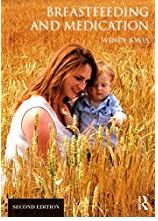One of the more frequently asked questions recently relates to nausea and even vomiting when breastfeeding. It may be due to norovirus, pregnancy (see https://breastfeeding-and-medication.co.uk/fact-sheet/vomiting-in-pregnancy-whilst-still-breastfeeding ) or to stop nausea from medication e.g morphine.
I hope this factsheet provides some options. The information is taken from my book Breastfeeding and Medication which provides more details and references. Maybe you need to buy a copy?
Nausea can be triggered by a variety of factors including food poisoning, motion sickness, labarynthitis, vertigo, pregnancy, migraine or as a symptom of other underlying conditions.
Cinnarazine (Stugeron®)
Cinnarazine is used for symptomatic treatment of nausea and vertigo caused by Ménière’s disease as well as prevention of travel sickness. There are no data on transfer into breastmilk but it is licensed for use in children.
Probably compatible with use during breastfeeding. Although there are no data on transfer into breastmilk, it is licensed for use in children.
Prochlorperazine ( Stemetil®, Buccastem®)
Prochlorperazine is used to treat vertigo, labarynthitis, migraine or drug-induced emesis. Its oral bio-availability is low due to high first-pass metabolism. Long-term use should be avoided in breastfeeding where possible, particularly with very young babies where there is a potential risk of apnoea. However short-term acute use probably poses few risks as it is licensed for use in children over 10 kg.
Compatible with use during breastfeeding if used short term. Avoid long term or where child is at risk of apnoea.
Domperidone (Motilium®)
Domperidone stimulates gastric emptying. It causes fewer central effects such as sedation and dystonia (although there are still reports of these) because it does not cross the blood–brain barrier. Its dopamine antagonist activity stimulates prolactin release, which makes it useful as a galactagogue.
Domperidone is metabolised by cytochrome P450 so care should be taken with potential interactions. It is more than 90% bound to plasma proteins and has a low bio-availability on an empty stomach (15%) when taking orally due to first-pass hepatic and intestinal metabolism.
Doses of more than 60 mg per day have been associated with sudden cardiac death although reports have been predominantly in the elderly and in those receiving intravenous doses (FDA 2004, Joss et al. 1982, Giaccone et al. 1984, Weaving 1984, Roussak 1984, Osborne et al. 1985, manufacturers information 2012).
Compatible with use during breastfeeding due to extensive plasma protein binding. See also information as a galactogogues.
Metoclopramide (Maxolon®, Migravess®, Paramax®)
Metoclopramide is a dopamine antagonist and can cause extra-pyramidal side effects, in particular, acute dystonia. This adverse effect is most commonly seen in children and young adults, especially females, so it is not a drug of choice in lactating mothers who generally fall into this age group. It may also precipitate hypotension and depression. Other side effects reported include headache, diarrhoea, dry mouth and change in appetite (Ingram et al. 2011). It stimulates prolactin secretion and has been used as a galactogogue but has now been superseded. The bio-availability of oral metoclopramide is about 75% but varies widely between patients due to its hepatic first-pass metabolism. Concentrations higher than those in maternal plasma may be reached in breastmilk particularly in the early puerperium, although these decrease with increased maturity.
Compatible with use during breastfeeding but avoid if possible due to risk of extrapyramidal effects and link with depression. Use domperidone as an alternative.
Cyclizine (Valoid®)
Cyclizine is an anti-emetic used to treat motion sickness, post-operative nausea and vomiting, after radiotherapy, and in drug- induced situations as well as nausea in pregnancy. There are no reports of levels entering breastmilk (BNF) or data on which to base conclusions. There is an unlicensed dose for children aged over 6 years.
Avoid if possible as no information on passage into breastmilk although if use considered essential unlikely to produce adverse effects if used short term. Longterm use may cause drowsiness in baby and consequent weight loss.
Hyoscine (Joy Rides®, Kwells®)
Hyoscine produces a reduction in salivation as well as some sedation. It is commonly used to prevent travel sickness as well as other types of nausea, either as an oral tablet or as a patch. It is believed to pass into breastmilk but no studies report the amounts. No reports of adverse effects appear to have been made and it appears compatible with breastfeeding, particularly to prevent travel sickness. Long-term use could decrease lactation.
BNF suggests that the amount in breastmilk is too small to be harmful.
Safe to use during breastfeeding to prevent travel sickness. No studies on passage into breastmilk but no adverse events reported so safety presumed as used in paediatric doses.
Ondansetron ( Zofran®)
This drug is a 5-HT3 antagonist with antiemetic activity. It is used in the management of nausea and vomiting induced by cytotoxic chemotherapy and radiotherapy. It is also used for the prevention and treatment of post-operative nausea and vomiting that have not responded to other antiemetic agents. Ondansetron may also be used for nausea in pregnancy. It is licensed for use in children from two years of age. It is 60% orally bio-available and 70–75% plasma protein bound. The terminal half-life is 3 hours after oral doses. There are no studies on transfer into breastmilk although it has been found in animal studies (BNF).
Avoid if possible as no information on passage into breastmilk but licensed for use in children > 2 years.
See also https://www.sps.nhs.uk/articles/treating-nausea-during-breastfeeding
